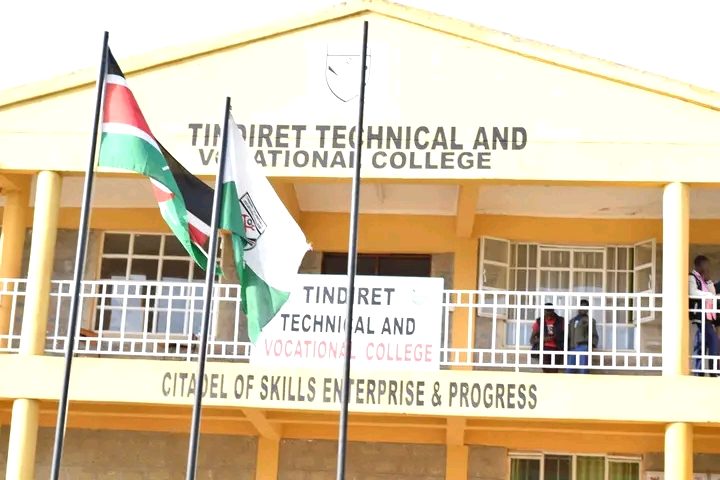In many learning institutions, an informal hierarchy exists that transcends age, experience, and official position—a phenomenon often referred to as the “Big Brother and Big Sister Syndrome.” This dynamic affects students, teachers, and sometimes administrative staff, shaping the school’s culture and influencing relationships, participation, and overall performance. While seniority can foster guidance and mentorship, when authority is misused, it often leads to intimidation, fear, and resentment.
Among students, the syndrome is most visible in the interactions between seniors and juniors. In one boarding school, a Form Two student named Peter struggled with algebra. During a break, a senior student, James, walked past and sneered, “Peter, even Form One students understand this! How are you this slow?” Peter’s face flushed red, and he froze, too embarrassed to respond. For weeks, he avoided participating in class, fearful of further humiliation. In another scenario, Fatima, a junior, was repeatedly asked by senior students to run errands and carry out minor chores. When she tried to explain that she had her own schoolwork, a senior snapped, “Do you think you’re special? Do as we say or be ready to be laughed at!” Humiliated, Fatima withdrew from group activities, feeling excluded and marginalised.
This phenomenon extends to dormitories and classrooms, where juniors are often subject to minor yet demoralising pressures. One junior, Aisha, forgot to tuck in her sheets before inspection and was shouted at in front of everyone: “Look at you! Do you call this a bed?” In classrooms, peer whispers and threats—such as “Answer wrong, and we’ll all laugh at you”—make juniors hesitant to participate, undermining confidence and learning.
Teachers are not immune to the syndrome. Senior educators sometimes exert informal authority over junior staff, undermining their initiatives and decisions. Mr Okello, a newly appointed teacher, introduced a hands-on science experiment to engage students. During a staff meeting, a senior teacher sharply remarked, “Are you trying to show off? This is not how we do things!” Mr Okello felt humiliated and hesitated to innovate again. In another case, Ms Amina organised a student debate competition with administrative approval. A senior teacher stormed into the event, shouting, “Who authorised this? You should have asked first!” The public reprimand embarrassed Ms Amina and discouraged her from initiating future activities. Similarly, junior teachers often face dismissive attitudes during meetings. One suggested a new approach to teaching English, only to be told, “This is unnecessary. Stick to the old method,” which stifled collaboration and innovation.
Freshers and junior staff members often experience this phenomenon as part of their mentorship journey. While structured mentorship programs are meant to guide and support, in reality, many freshers navigate an unspoken hierarchy that can feel intimidating. Positive mentorship helps juniors feel empowered, confident, and ready to contribute, but negative mentorship—such as public scolding, subtle undermining, or excessive control—can erode confidence and limit professional growth.
READ ALSO:
The causes of this syndrome are complex. Hierarchical school cultures, societal norms equating seniority with authority, lack of structured mentorship programs, competition for recognition, and personal insecurities all contribute to the situation. Administrators sometimes fail to monitor interactions, allowing informal hierarchies to solidify unchecked. The consequences are significant: students experience anxiety, low self-esteem, and diminished academic performance; teachers face professional stagnation, low morale, and reluctance to innovate; and the school as a whole risks developing a toxic environment in which collaboration, creativity, and fairness are suppressed.
Addressing the Big Brother and Big Sister Syndrome requires deliberate and thoughtful interventions. Structured mentorship programs can channel the influence of seniors—both students and teachers—into guidance, support, and knowledge-sharing. Clear rules against bullying, intimidation, and public reprimands, combined with safe reporting mechanisms, ensure accountability. Administrators must actively supervise interactions, intervene when necessary, and promote transparent, inclusive decision-making. Leadership training, confidence-building workshops, and peer-support programs empower juniors to assert themselves responsibly, while recognition of seniors who mentor constructively reinforces the positive exercise of authority.
Consider transformed scenarios: Peter struggles with algebra again, but James kneels beside him and says, “Try this method with me; you’ll get it soon. Don’t worry, we all start somewhere.” Fatima asks for help with dormitory chores, and a senior replies kindly, “Let’s do this together; I’ll show you how to manage it faster next time.” Mr Okello presents a new science experiment, and a senior teacher says privately, “Your approach is creative; here are a few suggestions to refine it.” In these situations, mentorship replaces intimidation, fostering confidence, collaboration, and a supportive culture.
The Big Brother and Big Sister Syndrome, therefore, can either nurture growth or breed fear. When exercised ethically, authority becomes a tool for guidance, mentorship, and community-building, inspiring students and teachers alike to achieve their full potential. When misused—through intimidation, public scolding, or undermining colleagues—it erodes trust, confidence, and professional creativity. Learning institutions that understand and actively manage this dynamic cultivate environments where every member can thrive, and where leadership is measured not by dominance, but by the positive impact it creates.
By Hillary Muhalya
You can also follow our social media pages on Twitter: Education News KE and Facebook: Education News Newspaper for timely updates.
>>> Click here to stay up-to-date with trending regional stories
>>> Click here to read more informed opinions on the country’s education landscape






